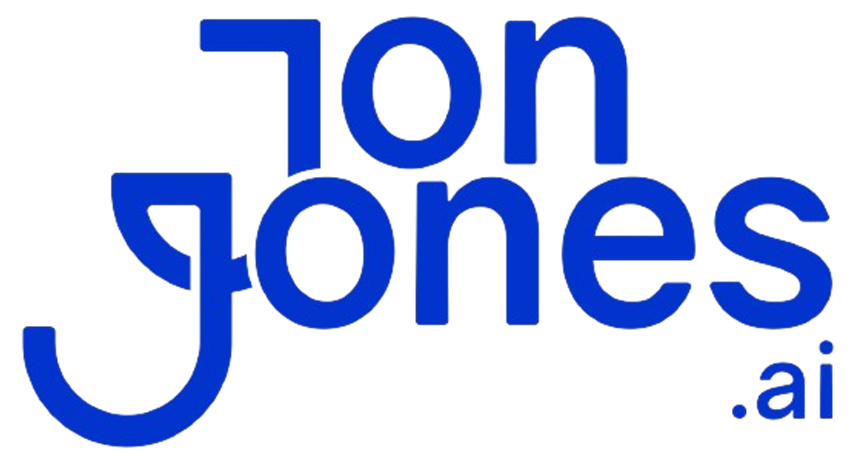Ever wished your next blog post could spark ten times more leads while you enjoy your morning coffee?
We’ve all been there, staring at a blank page. But AI content creation can turn panic into progress. Natural language processing (NLP, the tech that helps computers understand human words) and natural language generation (NLG, the part that spins those words into a draft) crank out outlines and copy in seconds.
Today’s tools also whip up social posts, email campaigns, product listings, and even video scripts in a flash. Nice.
That means you and your small team can juggle a huge content calendar without burning out.
In this post, we’ll walk through five AI-driven tips to boost your lead generation, cut your writing time, and let you focus on real growth.
Ready to see how it works?
Comprehensive Overview of AI Content Creation Methods

Ever stared at a blank page? We’ve been there. AI content creation, using natural language processing (NLP) and natural language generation (NLG), turns a four-hour writing sprint into seconds. You get instant ideas, outlines, and draft copy without the writer’s block.
Today’s AI tools do more than text. They create social media updates, email campaigns, and product listings. Then they jump into audio and video. With that kind of output, small teams can keep up with big publishing schedules.
- Blog posts and long-form articles
- Social media posts and ad copy
- E-commerce product descriptions and email campaigns
- Images and videos
- Landing pages and content briefs
But AI isn’t the whole story. Blending machine speed with your human touch keeps quality high. You’ll slash hours and spend less on freelancers. And when you hook AI into your wider workflow automation tools, you can start a blog draft, schedule social posts, and update product pages without switching screens.
Editing still matters.
Human edits give your content the right tone, fact checks, and context. That way, everything reads naturally, hits the mark, and aligns with your goals.
Step-by-Step Workflow for AI Writing Tools

First, get your workspace ready. That means choosing the right AI (artificial intelligence) writing tool and connecting it to your content hub. We like ChatGPT or Jasper because they let you set a brand voice.
Next, create an account, define your tone and audience, then link to your project folder or CMS. You know, it’s like teaching a new teammate how you work. That setup keeps your tools focused before you hit generate.
Crafting Effective Prompts
Good prompts drive your AI to give you useful content. Start by naming your audience, project type, and key ideas. For example: “Write a 300-word blog intro for busy entrepreneurs that highlights time savings.” Then add style notes like “friendly, upbeat” and any must-have keywords. If you want a list or table, ask for it. Short, clear prompts help the model stay on track. Tweak and test until the result feels spot on.
PRO TIP: Sometimes I write for a half an hour or more just crafting a prompt. Its critical to give the AI a complete, detailed instruction before interacting with it in order to get the best result. I often write in a Word doc first before even opening ChatGPT.
Editing and Refining AI Output
Once the draft appears, fact-check any stats and brand details. Run a plagiarism scan to catch overlap. Then read it aloud, does the voice match your brand? If you spot jargon or clunky bits, tighten them up. Sometimes we pull out a paragraph and say, “Rewrite this with more energy and fewer buzzwords.” That back-and-forth turns a rough draft into polished copy.
Integrating AI Output into CMS
When your draft shines, export it. In WordPress or your headless CMS, create a new post and paste in the copy. Fill out the SEO title, slug, and meta description, then add categories and tags. If you can schedule the post, pick a publish date. And hey, some AI plugins let you push drafts straight from the tool, no copy-paste needed. Everything stays in one spot.
Over time, keep a feedback loop going. Watch your post’s performance metrics, note what resonated, then feed those insights back into your prompts. Before you know it, the AI learns your brand’s voice and goals, becoming an even stronger writing partner.
Comparing Leading AI Content Creation Platforms

When you’re looking for the best AI (artificial intelligence) tools to create content, it helps to line up templates, pricing, and key features side by side. Some platforms focus on blog posts, while others handle everything from social media captions to online store listings. A few let you lock in your brand voice, and some zero in on SEO (search engine optimization).
| Tool | Best For | Pricing | Key Features |
|---|---|---|---|
| Jasper AI | Multi-format content | $39+/month | 50+ templates, brand voice controls |
| Copy.ai | Social media | Free plan (10 credits/month), $49/month after | Fast social drafts |
| Frase | SEO outlines | Custom pricing | Keyword suggestions, outline tools |
| HubSpot AI | Topic research | Included with HubSpot plans | Deep-learning topic scanner |
Picking the right platform depends on your content mix and your budget. Let’s break it down.
• Jasper AI gives you more than 50 templates and controls to set your brand voice. It starts at $39 a month.
• Copy.ai nails quick social media drafts. You get 10 credits every month for free, then it’s $49 a month if you need more.
• Frase shines when you need SEO outlines and keyword ideas. They’ll quote you a custom price based on what you pick.
• HubSpot AI takes the guesswork out of topic research with its deep-learning scanner, and it comes with your HubSpot plan.
PRO TIP: I wouldn’t bother with any of these except for Copy.AI. I started with Japser in January 2022. Its a great way to waste time. I would actually create my own blog writer in Airtable, Make and using the AI of my choice trained in my brand voice.
Now, match each tool to your workflow.
If long articles and product pages are your jam, Jasper AI’s huge template library will save you hours. If you live for tweets and posts, Copy.ai will draft them lightning-fast.
For SEO-driven writing, Frase is your go-to. And if you just want to uncover hot topics, HubSpot AI has your back.
Ready to pick your sidekick?
Multimedia and Visual AI Content Generation

AI (artificial intelligence)-powered images can take a rough sketch of your new product and turn it into a scroll-stopping marketing graphic in minutes. You upload your draft, and we refine every line and color. No design pro needed.
Video production usually feels costly and slow, you know? But with AI video production (software that turns scripts into videos), you feed in your text and get back a ready-to-share clip. Tools now add voiceovers, animated highlights, and captions, so you just hit play and publish.
Here are a few of our favorite tools:
- Canva: Over 600,000 templates plus Magic Design, which spins text prompts into layouts. Then tweak your copy with Magic Write to nail your message.
- Pictory: Load your scripts or blog posts and instantly get short videos with AI voiceovers and auto-highlighted scenes. It’s like repurposing your ebook in seconds.
- Synthesia: Adds avatar hosts (digital presenters) in 120+ languages so you can speak to any audience in their own voice.
- Supermeme.ai and Kapwing: Need a quick laugh or an engagement bump? Browse 1,000+ meme and GIF templates, drop in your text, and watch social shares climb.
- Narrato AI Content Genie: Generates 20–25 social posts or blog drafts weekly from your site’s URLs and themes, then auto-schedules them for you.
Once your visuals and videos are ready, just plug them into your CMS (content management system) or social scheduler. Drag and drop into Buffer or your blog dashboard, add captions, choose your publish times, and let automation handle the rest. So nothing slips through the cracks.
Enhancing SEO and Quality with AI Content Optimization

Search engines love pages that answer real questions. But doing keyword research and mapping topics by hand can feel like hunting for a needle in a haystack.
We often miss related terms, place headers wrong, or cram in keywords until the prose feels awkward. Those hiccups slow us down and can even hurt our rankings.
AI (artificial intelligence) tools fix that in seconds. Surfer SEO shows primary and secondary keywords, header ideas, and target density right next to your draft. But keep in mind, SurferSEO is just a very pretty skin over some free or very cheap tools.
MarketMuse uses semantic SEO AI (an AI that spots topic gaps) to build cluster-based outlines. Frase taps real user search queries to suggest subheadings and score your draft on depth and relevance. These both are great if you have budget and want to move fast. But not everyone has budget, nor can they move fast.
If you have financial constrains and willing to exchange your time, then Airtable, Make.com and ChatGPT can usurp these tools easy.
With these AI content optimization helpers, you spend less time flipping between spreadsheets and dashboards and more time polishing your core message. Got it.
But we never skip the human touch. Read your draft out loud to make sure it still sounds like you. Swap in brand phrases. Tighten your sentences. Cut repeated keywords so you avoid over-optimization.
Then run a plagiarism check to catch any accidental copy. This is not likely very necessary but everyone is different. Finally, weigh each example and stat against your audience’s needs. By blending machine-driven insights with a human eye, you keep your voice, protect readability, and boost SEO without sounding forced.
Integrating AI Tools into Marketing Automation Workflows

Ever feel like you’re juggling a dozen (errrr…4 dozen) open tabs? I get it. When you bring all your marketing tasks under one roof, you cut manual work in half and free yourself up for strategy.
AI marketing automation (software that handles your marketing tasks) ties scheduling, publishing, analytics, and reporting into a single stream. You can even push content from your hub straight into your workflow automation tools and any AI content management system (tool that stores and organizes your AI-generated content).
Scheduled Publishing and Social Management
Buffer’s AI Assistant (a tool that suggests hashtags, translates captions, and picks the best times to post) helps 140,000 small businesses craft and queue posts across Twitter, Instagram, Facebook, Pinterest, and TikTok. It’s like having a social media helper working around the clock.
Buffer is alright, but its kind of expensive actually. I prefer Metricool. Its equally robust and offers way, way more value for the buck.
Narrato AI Content Genie (an AI writing tool) pulls 20–25 draft posts from your site’s URLs and main themes each week. Then it auto-schedules them so nothing slips through the cracks. Set it up once and watch your content calendar fill itself.
Analytics and Sentiment Monitoring
Meltwater (a social listening tool) gives you 15 months of historical data and real-time alerts. When a trend starts to rise, your dashboard lights up so you can jump in fast. You’ll track share of voice, engagement rates, and more without digging through spreadsheets.
Mentionlytics (a sentiment analysis tool) scans comments, reviews, and posts across platforms. It tags them as positive, negative, or neutral and flags influencers worth reaching out to. This lets you tweak your campaigns on the fly with smarter insights.
Competitor Analysis and Reporting
Predis.ai benchmarks your Facebook and Instagram posts against your rivals. It measures engagement rates, hashtag impact, and posting cadence so you see exactly where you lead and where you can improve.
Rival IQ (a competitive analysis platform) uses machine learning (algorithms that learn from data) to spot boosted posts and track content types side by side. You can schedule automated reports weekly or monthly for hands-off insights that show your next move.
Fine-tuning your AI content workflow means we link each tool, feed performance data back into the system, and refine as we go. We review results, tweak prompts, adjust schedules, or swap in fresh visuals. Over time, this builds a smooth, scalable system that feels less like juggling and more like teamwork.
Ethical Considerations and Human–AI Collaboration in AI Content Creation

AI (artificial intelligence) writing can sometimes misstate facts or echo biases in its training data. It might even stray from your brand’s unique voice or slip in accidental copying. And hallucinations (fabricated details) can pop up out of nowhere.
Okay, let me rephrase: we build human editing workflows that tie style guides, fact checks, and transparency steps into every draft. Our editors scan for errors, refine the language, and keep your tone consistent. Then we run plagiarism detection tools (software that spots copied content) to catch any overlaps with published work.
Bias in AI tools comes from training data that overrepresents certain cultures or viewpoints. To offset that, we mix in diverse data sets, rotate test prompts, and run regular audits to flag stereotypes or harmful language. We also follow compliance checklists for regulations like GDPR (General Data Protection Regulation) and industry standards.
Balancing machine speed with human oversight keeps your content fresh, accurate, and on-brand. So you get fast drafts without sacrificing trust or quality. Nice.
Final Words
In the action of streamlining your marketing, we explored methods for ai content creation, from ideation speed to multimedia assets and SEO tuning.
We walked through setting up prompts, refining drafts, and comparing top tools like Jasper and Copy.ai. We also saw how visuals, publishing workflows, and ethical checks keep your brand voice sharp.
Next, plug chosen solutions into your scheduling, analytics, and compliance routines.
You’re ready to automate growth and produce standout content at scale, here’s to efficient, creative days ahead.






